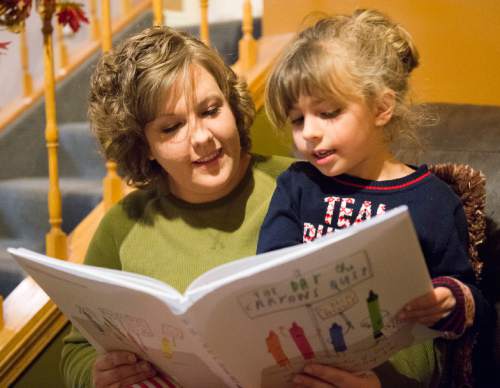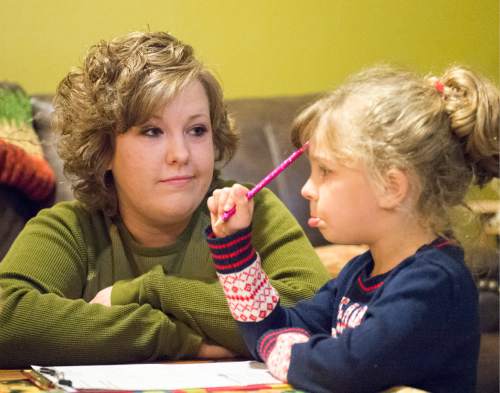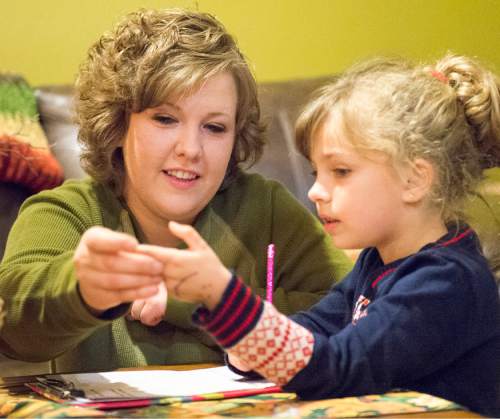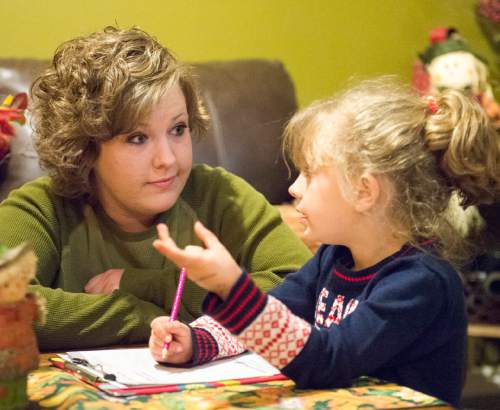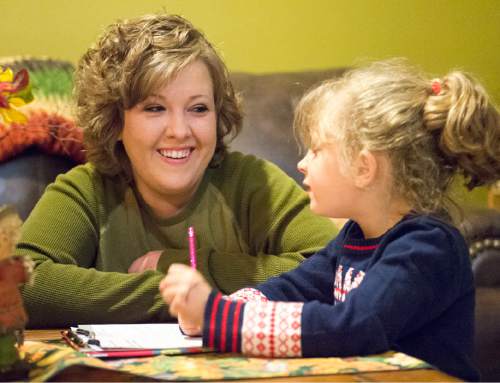This is an archived article that was published on sltrib.com in 2014, and information in the article may be outdated. It is provided only for personal research purposes and may not be reprinted.
If there were a cheerleader for "Obamacare" in Lehi last fall, it was Alicia Hobson.
She defended it against her more conservative friends on Facebook and was among the first to venture onto HealthCare.gov.
This year is a different story, though, because Hobson, 32, endured a frustrating and, ultimately, fruitless attempt to insure herself and her daughter, 6.
This Saturday, as the federal marketplace opens for 2015 enrollment, Hobson will be a wary shopper.
"I don't think the idea is bad," she says. "I'm still all for the idea of affordable health care."
The uninsured like Hobson, who can't afford the $500-plus-per-month insurance offered by her employer, will have dozens of plans to choose from. She works at a call center where she makes, of all things, calls to verify auto insurance coverage.
Tanji Northrup, Utah's assistant insurance commissioner, says Salt Lake County residents alone will be offered 103 plans, up from 91 last year.
The number of plans varies by county; Utahns can see a list of those offered to 21-year-old individuals — the base rate for all plans — in every county at the Utah Insurance Department website, under the health reform tab.
Six companies are offering plans to Utahns on the federal marketplace in 2015: Altius, Arches, BridgeSpan, Humana of Utah, Molina and SelectHealth. Some of those companies and more offer plans off the federal marketplace, via insurance agents, and Avenue H, the state's marketplace for small businesses, has still different plans.
Rates are going up more in rural Utah than in the state's urban areas, Northrup says.
For instance, the price of insurance for those living in Utah's urban areas is going up 5.3 percent on average, but those living in rural Utah will see rates rise by 7.6 percent. Statewide, insurance rates are going up an average of 5.7 percent, she says.
Jason Stevenson, communications director for the consumer advocacy group, Utah Health Policy Project (UHPP), said it bodes well for others that the benchmark plan for a 21-year-old in Salt Lake County is going up just 2.7 percent, from $141.49 to $145.36 per month.
Most people buying insurance on the exchange qualify for federal subsidies, so the actual cost is usually lower. Those whose earnings fall between the federal poverty level and 400 percent of poverty can get subsidies.
—
Worth the price? • Average rates may not be climbing exorbitantly, but some people face steep price hikes.
Real estate agent Ron Thurber of Sandy, 52, said he received a letter this week that his rate is going from $69 to $101 per month next year, a 46 percent hike.
Nonetheless, he doesn't intend to shop around for a new plan because he's happy with what he's got. In fact, says Thurber, who went 15 years without insurance before the Affordable Care Act, he would pay more. "I'd be willing to pay $150."
Eric Temple of South Ogden says he definitely will shop around for new insurance on HealthCare.gov after his insurance company told him that the rate he and his wife pay is going up $300 per month.
The couple pays $900 a month to cover them and their daughter in college with a "gold" plan, and that's after a $374 per month subsidy.
Nonetheless, the couple is paying $700 a month less than what they paid via Utah's high-risk pool (he has diabetes) and the insurance she brought with her when they moved from Maryland, where she was treated for breast cancer.
"It's a lot of money," says Temple, 58, who owns a video production company. "Health care is a huge part of our budget."
Like many, Temple has mixed feelings about Obamacare. "It's still sort of a trainwreck," he says. Nonetheless, "It's been a lifesaver."
—
The ordeal • Interestingly, Hobson's Lehi ZIP code, 84043, had the second highest number of residents signing up for Obamacare on the federal exchange, 1,654. South Jordan's ZIP code 84095 was tops, with 1,811 signups. (See graphic).
Yet not having insurance makes Hobson cautious. When her 6-year-old asks to play at a friend's house, Hobson's first thought is the cost of an injury. "Do they have a trampoline?" she asks her daughter. "A dog?"
She had expected to be insured this year, after two years without insurance, but it was bungled all along the way.
First, the HealthCare.gov website had her application "processing" for two months. Then the exchange needed a form from her employer. When she finally got insurance, it was at a rate far higher than it should have been and she was never given a card or even an address for sending a payment.
Her plan was cancelled for nonpayment after the enrollment period ended, and she spent countless hours on hold with HealthCare.gov's customer service agents, who were no help at all in getting her insurance reinstated, she said.
"What a friggin' mess. It was insane," she says.
While she hopes to have insurance come Jan. 1, Hobson figures she's in for a penalty on her taxes because she was uninsured this year.
The fine (the IRS calls it an "individual shared responsibility payment") could be $95 for her and $47.50 for her daughter.
Says Hobson: "It's irritating, because I really tried."
Twitter: @KristenMoulton How to get help
The HealthCare.gov website has new features to help consumers get a better match on a healthcare plan, but it's also free to visit an insurance agent for advice about plans on the exchange. Also, Take Care Utah has trained hundreds of navigators throughout the state to help people learn about their options. Go to its website, takecareutah.org or call 2-1-1 on a phone. Enrollment for 2015 begins Saturday.



